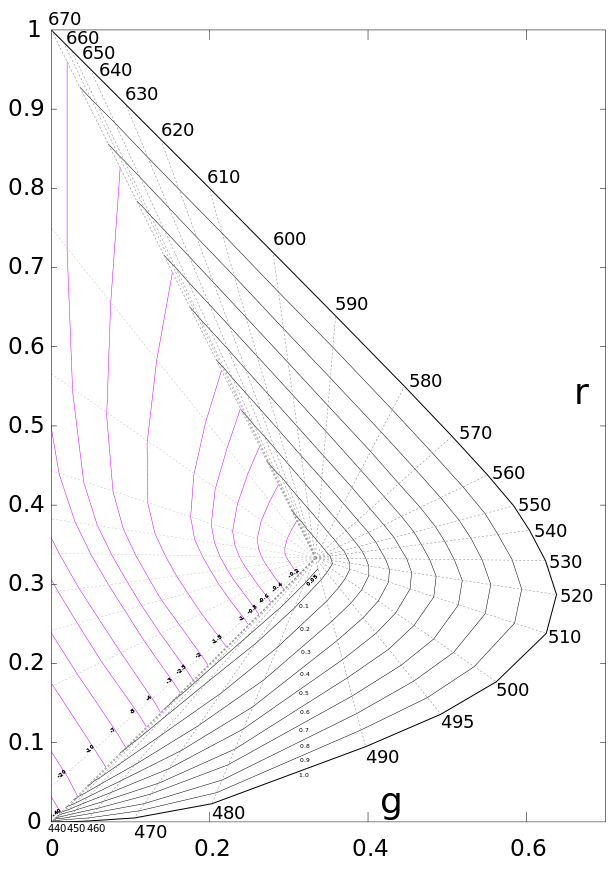Khoa học công nghệ
Hiệu quả chiếu sáng – Phần 2
Bảng dưới đây liệt kê hiệu quả về độ sáng của nguồn và hiệu quả đối với các nguồn ánh sáng khác nhau. Lưu ý rằng tất cả các bóng đèn đòi hỏi chấn lưu điện / điện tử trừ khi ghi chú (xem điện áp) được liệt kê mà không mất mát cho điều đó, giảm tổng hiệu quả.
| Category |
Type |
Overall luminous efficacy (lm/W) |
Overall luminous efficiency[note 1] |
|---|---|---|---|
| Arc lamp | carbon arc lamp | 2-7[33] | 0.29-1.0% |
| Arc lamp | xenon arc lamp | 30–50[34][35] | 4.4–7.3% |
| Arc lamp | mercury–xenon arc lamp | 50–55[34] | 7.3–8% |
| Arc lamp | UHP – ultra-high-pressure mercury-vapor arc lamp, free mounted | 58–78[36] | 8.5–11.4% |
| Arc lamp | UHP – ultra-high-pressure mercury-vapor arc lamp, with reflector for projectors | 30–50[37] | 4.4–7.3% |
| Cathodoluminescence | electron stimulated luminescence | 30[citation needed] | 5% |
| Combustion | candle | 0.3[note 6] | 0.04% |
| Combustion | gas mantle | 1–2[14] | 0.15–0.3% |
| Fluorescent | 32 W T12 tube with magnetic ballast | 60[38] | 9% |
| Fluorescent | 9–32 W compact fluorescent (with ballast) | 46–75[18][39][40] | 8–11.45%[41] |
| Fluorescent | T8 tube with electronic ballast | 80–100[38] | 12–15% |
| Fluorescent | PL-S 11 W U-tube, excluding ballast loss | 82[42] | 12% |
| Fluorescent | T5 tube | 70–104.2[43][44] | 10–15.63% |
| Fluorescent | 70-150 W Inductively Coupled Electrodeless Lighting System | 71-84[45] | 10-12% |
| Gas discharge | 1400 W sulfur lamp | 100[46] | 15% |
| Gas discharge | metal halide lamp | 65–115[47] | 9.5–17% |
| Gas discharge | high pressure sodium lamp | 85–150[18] | 12–22% |
| Gas discharge | low pressure sodium lamp | 100–200[18][48][49] | 15–29% |
| Gas discharge | Plasma display panel | 2-10[50] | 0.3–1.5% |
| Halogen incandescent | 100–200–500 W tungsten halogen (230 V) | 16.7–17.6–19.8[20][18] | 2.4–2.6–2.9% |
| Halogen incandescent | 2.6 W tungsten halogen (5.2 V) | 19.2[21] | 2.8% |
| Halogen incandescent | tungsten quartz halogen (12–24 V) | 24 | 3.5% |
| Halogen incandescent | photographic and projection lamps | 35[22] | 5.1% |
| Ideal sources | Truncated 5800 K blackbody[note 3] | 251[7] | 37% |
| Ideal sources | Green light at 555 nm (maximum possible luminous efficacy) | 683.002[11] | 100% |
| Incandescent | 15–40–100 W tungsten incandescent (230 V) | 8.0–10.4–13.8[15][16][17][18] | 1.2–1.5–2.0% |
| Incandescent | 5–40–100 W tungsten incandescent (120 V) | 5–12.6–17.5[19] | 0.7–1.8–2.6% |
| Light-emitting diode | white LED (raw, without power supply) | 4.5–190 [23][24][25][26] | 0.66–28% |
| Light-emitting diode | LED screw base lamp (120 V) | 55–102[27][28][29] | 8.1–14.9% |
| Light-emitting diode | 7 W LED PAR30 (110-230 V) | 60[30] | 8.8% |
| Light-emitting diode | 11 W LED screw base lamp ( 230 V) | 138[31] | 20.3% |
| Light-emitting diode | Theoretical limit for a white LED with phosphorescence color mixing | 260–300[32] | 38.1–43.9% |
Các nguồn phụ thuộc vào sự phát xạ nhiệt từ sợi filament rắn, chẳng hạn như bóng đèn sợi đốt, có xu hướng có hiệu quả tổng thể thấp bởi vì, theo Donald L. Klipstein, “Một bộ tản nhiệt lý tưởng tạo ra ánh sáng nhìn thấy hiệu quả nhất ở nhiệt độ khoảng 6300 ° C ( 6600 K hoặc 11.500 F). Ngay cả ở nhiệt độ cao này, rất nhiều bức xạ là hồng ngoại hoặc tia cực tím, và hiệu suất chiếu sáng lý thuyết là 95 lumen / watt. Không có chất rắn và có thể sử dụng được như một bóng đèn sợi tóc ở nhiệt độ bất cứ nơi nào gần với điều này. Mặt trời không nóng lắm. ” Ở nhiệt độ nơi sợi dây vonfram của bóng đèn bình thường vẫn cứng (dưới 3683 kelvin), hầu hết lượng phát xạ của nó ở trong hồng ngoại
| Quantity | Unit | Dimension | Notes | ||
|---|---|---|---|---|---|
| Name | Symbol[nb 1] | Name | Symbol | Symbol | |
| Luminous energy | Qv [nb 2] | lumen second | lm⋅s | T⋅J [nb 3] | Units are sometimes called talbots. |
| Luminous flux / luminous power | Φv [nb 2] | lumen (= cd⋅sr) | lm | J [nb 3] | Luminous energy per unit time. |
| Luminous intensity | Iv | candela (= lm/sr) | cd | J [nb 3] | Luminous flux per unit solid angle. |
| Luminance | Lv | candela per square metre | cd/m2 | L−2⋅J | Luminous flux per unit solid angle per unit projected source area. Units are sometimes called nits. |
| Illuminance | Ev | lux (= lm/m2) | lx | L−2⋅J | Luminous flux incident on a surface. |
| Luminous exitance / luminous emittance | Mv | lux | lx | L−2⋅J | Luminous flux emitted from a surface. |
| Luminous exposure | Hv | lux second | lx⋅s | L−2⋅T⋅J | |
| Luminous energy density | ωv | lumen second per cubic metre | lm⋅s⋅m−3 | L−3⋅T⋅J | |
| Luminous efficacy | η [nb 2] | lumen per watt | lm/W | M−1⋅L−2⋅T3⋅J | Ratio of luminous flux to radiant flux or power consumption, depending on context. |
| Luminous efficiency / luminous coefficient | V | 1 | |||

